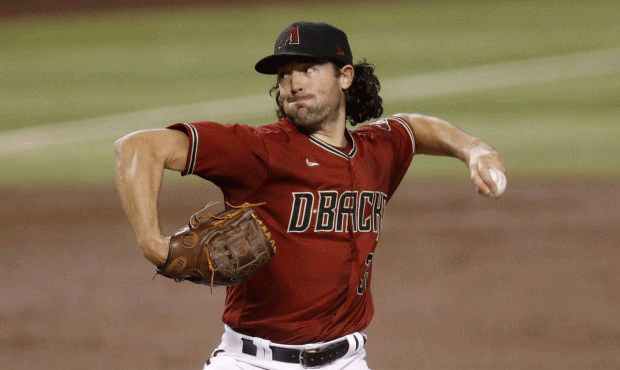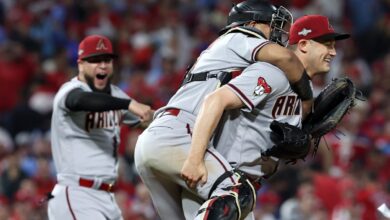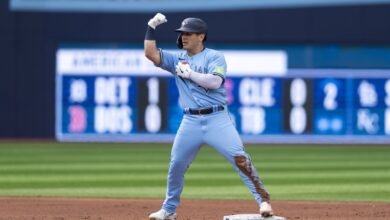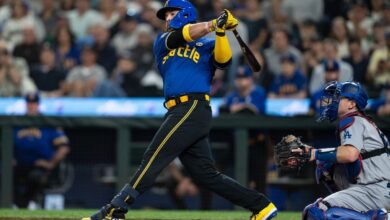
PEORIA, Ariz. – Patience is a virtue but, in some cases, impatience can be destructive.
When the Arizona Diamondbacks asked left-hander Robbie Ray to work on mechanics and concentrate on lower pitch counts, the time window for such alteration closed dramatically. That’s because the instructions to Ray transpired at the start of the 2020 season and that campaign was drastically altered by the pandemic.
Plus, Ray was about to enter free agency, and the combination of lack of prep time and an impending big paycheck caused movement. Given the condensed 60-game schedule, as opposed to the normal 162 games and the need to stretch out an education process, Ray found himself in a difficult position.
As a result of the marginal time window and the Diamondbacks’ need to see improvement, the club traded Ray to Toronto at the July 30, 2020 deadline for pitcher Travis Bergen. By that time, Ray had completed six seasons with the Diamondbacks and during this period, compiled a 47-46 record in 147 starts. As well, he fanned 996 batters in 793 innings and reached the summit of a defined power pitcher.
Yet, the malady of significant pitch counts and lack of going deep into games put Ray on the Diamondbacks’ radar screen. Though given an agenda, the shortened 2020 season was a significant factor in the Arizona organization’s desire to move in another direction.
“I don’t think they gave up on me,” Ray said in the Mariners clubhouse on March 25. “For me, it was a business decision. It was strictly that. I was going into free agency, and it was one of those things where you might as well get something for me at that point.”
After moving to the Jays at the 2020 trade deadline, Ray proceeded to put together an award-winning season. With Toronto in 2021, he went 13-7, a 2.84 ERA in 32 starts, led the American League with 193.1 innings pitched, and topped the circuit with 248 strikeouts. The result was the American League Cy Young award and a leap into free-agency elite.
More than impatience with Ray and the desire to perfect skills, the economic situation represented another significant factor. Because Arizona could not hold Paul Goldschmidt and traded the All-Star first baseman to St. Louis, the Diamondbacks handed Ray in a similar manner. Realizing the lefty would command a significant contract, the effort was an attempt to recover a player of potential. That did not happen. Bergen was granted free agency after the 2021 season and subsequently released by San Diego.
In the meantime, Ray was caught between the need to address Arizona’s concerns and secure his future. While Ray accepted the education and instruction to improve, the 60-game schedule in 2020 represented a significant factor.
“When you have a 60-game season, you don’t have the time to make adjustments,” he said. “You do not have a chance to ride this out. That was the biggest thing. The changes that I made could have been successful, but I just did not have a full 162 game to allow that to happen.”
Going forward, Ray’s success in his post-desert years is not a surprise, His arm slot changed, as did his release point. There is a more controlled game and greater authority of the strike zone. As well, Ray improved command of his secondary pitches and his fastball velocity has remained in the mid-90s.
As an integral part of the Diamondbacks’ 2017 post-season run, Ray’s stature rose. By 2020, his salary jumped to $9.430,000 from the $570,000 for the championship season of 2017. After he was dealt to Toronto, Ray signed for $8 million (2021) and then captured the AL Cy Young award. Now, he joined elite free agents and ended up with a 5-year, $115 million deal with Seattle.
“We counted on him in many different ways,” said Arizona manager Torey Lovullo. “I think he made some mechanical adjustments coming into the 2020 season. At that point, he didn’t have enough time to see what it was all about. What he has done and where he has taken his career has not surprised me.”
For the 2023 season, the 31-year-old from Brentwood, Tenn, will earn $21 million and has a no-trade clause for the previous 2022 season and the current 2023 campaign.
“(Ray) is an accomplished pitcher in this league and I really like where he is this spring,” said Scott Servais, the Seattle manager. “Last spring training was a little bit shorten with the lockout. He’s ready to go and had looked great all spring. His stuff is up, and he adds a lot in our clubhouse.”
Going forward … Ray is second in the Mariners’ rotation. Servais tapped righty Luis Castillo, acquired from Cincinnati at the trade deadline a year ago, to start the opener at home against Cleveland on March 30. In 11 starts with Seattle last season, Castillo went 4-2 and 3.17. Ray is slated to go in game two on April 1. The Seattle rotation then includes righty Logan Gilbert, lefty Marco Gonzalez and righty-hander George Kirby.





